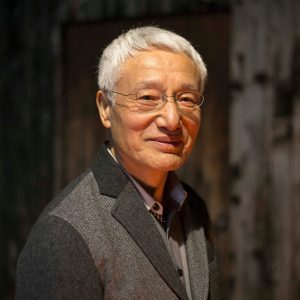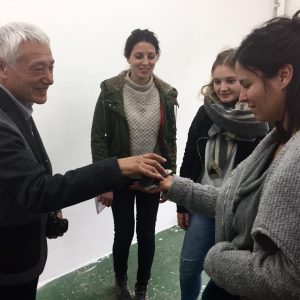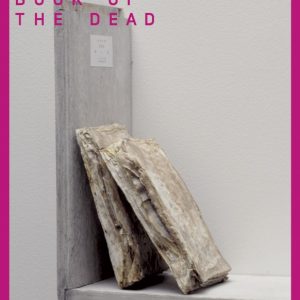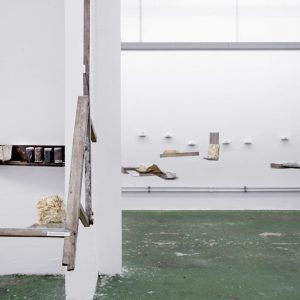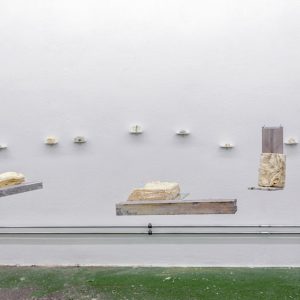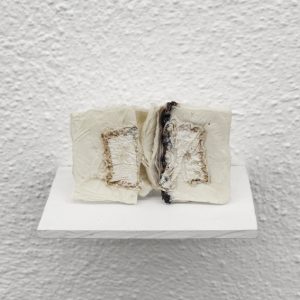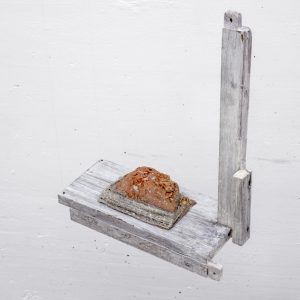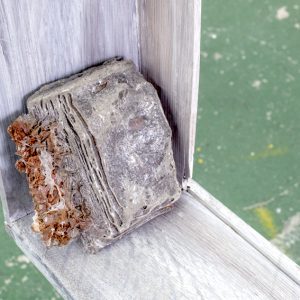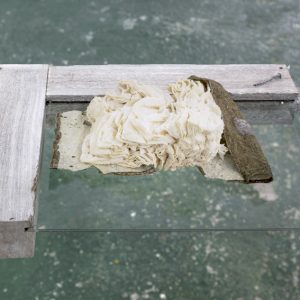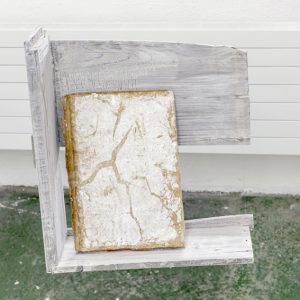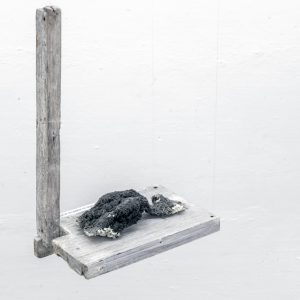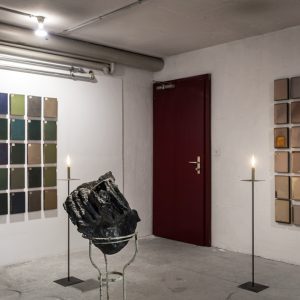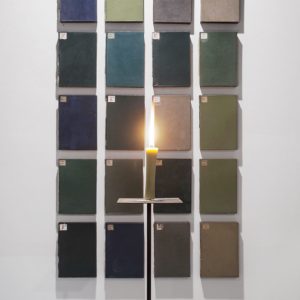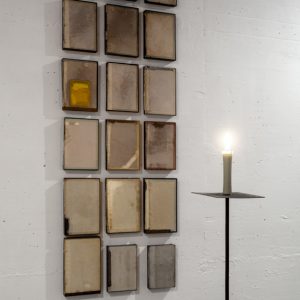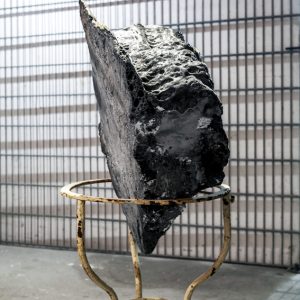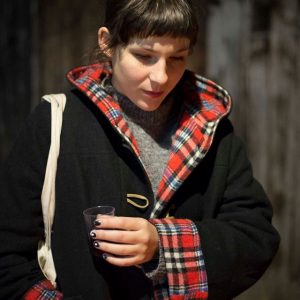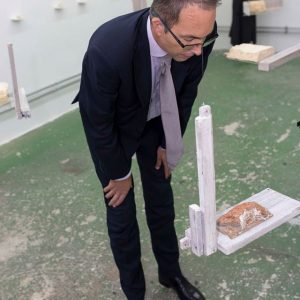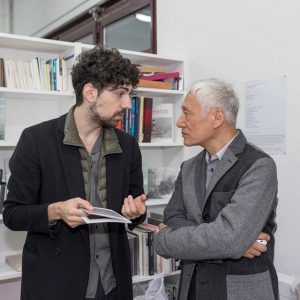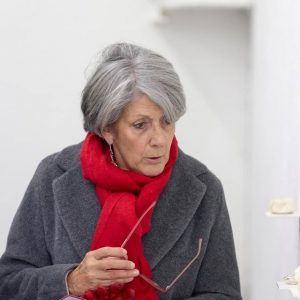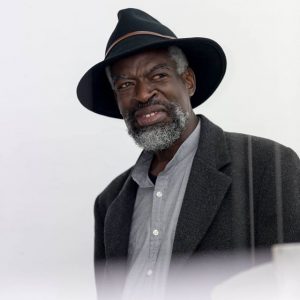Yohei Nishimura – Book of the Dead / 2016
Vernissage le lundi 7 novembre 2016
Exposition du 10 novembre au 4 décembre 2016
Lorsqu’ en juillet dernier Einzweidrei m’a demandé de parler du titre de cette exposition, il m’est immédiatement venu à l’esprit l’image du Bunki Mandala du temple Taimadera à Nara. Il n’y avait pas de raison particulière quant à ce choix précis, mis à part le fait que mes oeuvres, les « fired book » me semblaient étrangement liées à ce mandala. En travaillant sur le sujet de plus près, je découvris le roman de Shinobu Origuchi :« Book of the dead » qui relatait l’existence du temple. Ce dernier se trouve au pied du mont Nijouzan et était considéré, durant la période Asuka ( 592 à 710 ap J.C), comme la frontière entre le monde des vivants et celui de l’au-delà vers lequel les âmes des morts se dirigeaient. « Shisha no sho» est un roman unique qui traite du lien étroit entre le visible et l’invisible, réminiscence d’un labyrinthe évoquant le temps et l’espace. Peu à peu l’idée du titre de l’exposition s’est imposée à travers le thème du « Livre des Morts ». Yohei Nishimura
Le plus souvent catégorisé comme céramiste, Yohei Nishimura a commencé par étudier la sculpture et c’est sans doute là un élément clef de sa liberté. Lorsqu’il «brûle des choses» (traduction littérale de yakimono, le terme japonais pour la céramique), par exemple des livres ou des fruits, c’est pour mieux les conserver, voir pour libérer une forme d’énergie originelle et magique restée cachée jusqu’ici. Ce pionnier de l’enseignement spécialisé aux malvoyants substitue la matière et l’imaginaire au « virtuel », et interpelle ainsi notre mémoire commune, universelle. N’en déplaise aux défenseurs de la dissociation entre « art » et « craft », c’est bien d’art « contemporain » dont il s’agit.
Yohei Nishimura (西村 陽平) est né en 1947, il vit et travaille à Chiba et Tokyo.
Ses oeuvres se trouvent dans de nombreuses collections dont celles du Musée d’Art Moderne et du Musée d’Art Contemporain de Tokyo, du Musée National de la Céramique à Sèvres, du Musée des Arts Décoratifs à Paris, et du Victoria and Albert Museum à Londres. Il a enseigné 23 ans à l’école pour malvoyants de Chiba, et a dirigé jusqu’en 2016 le Nishimura Research Center à la Japan Women’s University à Tokyo. Il est représenté par la galerie Cavin & Moriss à New-York.
L’exposition fait partie du programme de l’Automne de la culture japonaise 2016
Yohei Nishimura a donné une conférence aux élèves de céramique du Centre d’Enseignement Professionnel de Vevey le mardi 8 novembre, tandis que Andrea Polier Sugawara a donné une conférence sur la céramique contemporaine japonaise le mercredi 9 novembre.
Last July, when Einzweidrei asked me to speak about the title of this exhibition, I immediately thought of the image of the Bunki Mandala from the Taimadera temple in Nara. There was no particular reason to motivate this precise choice, apart from the fact that my works, the “fixed books”, seemed somehow linked to this mandala for me. As I delved further into the subject, I discovered the novel by Shinobu Orikuchi, “Book of the Dead”, which tells the story of this temple. The temple sits at the foot of Mount Nijouzan and during the Asuka period (592 to 710 CE), it was considered as the border between the world of the living at that of the beyond, where the souls of the dead were headed. “Shisha no sho” is a unique novel that speaks of the close relationship between the visible and the invisible, reminiscent of a labyrinth evoking time and space. Little by little the title of the exhibition became evident, through the theme of the “Book of the Dead”. Yohei Nishimura
Often categorised as a ceramicist, Yohei Nishimura started out by studying sculpture, which is undoubtedly a key element to his creative freedom. When he “burns things” (a literal translation of yakimono, the Japanese term for pottery) – for example books or fruit – it is in order to better preserve them, or even to liberate a kind of original and magical energy that has remained hidden within them until now. The artist – also a pioneer of specialised teaching for the visually impaired – substitutes matter and imagination for the “virtual”, thus engaging our collective and universal memory. Though some may still defend the dissociation of “art” and “craft”, we are without a doubt in the presence of contemporary art.
Yohei Nishimura (西村 陽平) was born in 1947. He lives and works in Chiba and Tokyo. His works can be fond in many collections, such as the National Museum of Modern Art and the Museum of Contemporary Art in Tokyo, the Sèvres Ceramic Museum, the Museum of Decorative Arts in Paris, and the Victoria & Albert Museum in London. He taught for 23 years at the Chiba School for the Blind, and until 2016 was the director of the Nishimura Research Centre at the Japan Women’s University in Tokyo. He is represented by the Cavin-Morris gallery in New York.
The exhibition is part of the programme of the Automne de la culture japonaise (Autumn of Japanese Culture) 2016.


